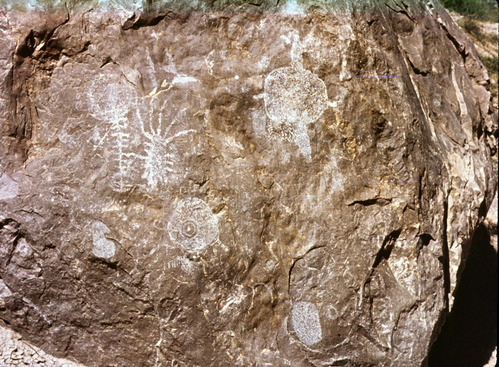Now I’m not much of a history geek but even I find the shenanigans in Big Bend pretty fascinating. Full disclosure, this part of Texas really cannot be given due justice in just a few paragraphs. But I’ll do my damnedest to pique your interest and make you thirsty to find out more.
First fun fact – the Big Bend has been inhabited since 10,000 BC! However, in this article I’m going to focus on more recent history.
In modern times, this area was home to farmland, ranching, mining, a wax factory and even “healing” bath houses.
Table of Contents
Early Farming & Ranching Efforts
Beginning in the 1880s, ranchers moved to Big Bend with their livestock. Unfortunately, they quickly overgrazed the land – typical greedy-ass humans ruining everything.
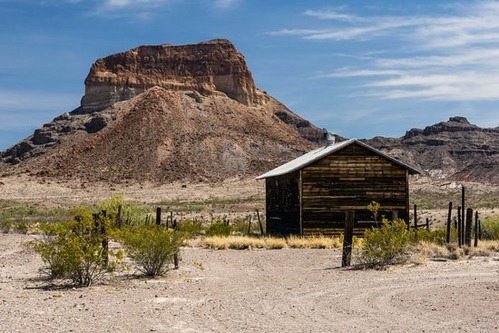
In the early 1900s, Mexican settlers began to farm the bank of the river’s floodplain. They built homes and farms on both the Mexican and the American side, downstream from Santa Elena Canyon. They grew corn, beans, wheat, squash, tomatoes, melons and cotton. Looking at it now, it’s hard to imagine it ever being fertile farm soil, but there they were.
In the 1920s Anglo-Americans joined the farming efforts. This continued even after the national park was established in 1944, and there are still many ranches on the Mexican side of the Rio Grande. In fact, wandering cattle and horses remain an issue for the park’s conservation efforts to this day.
Martin Solis and the Mariscal Mine
In 1900, a farmer named Martin Solis (whose family was suspected of a dark, unsolved murder) discovered cinnabar near his farm. Cinnabar contains mercury and at the time mercury was used for making scientific equipment, recovering gold and silver, manufacturing fulminate and vermilion, felt-making, and even in blasting caps and bomb detonators.
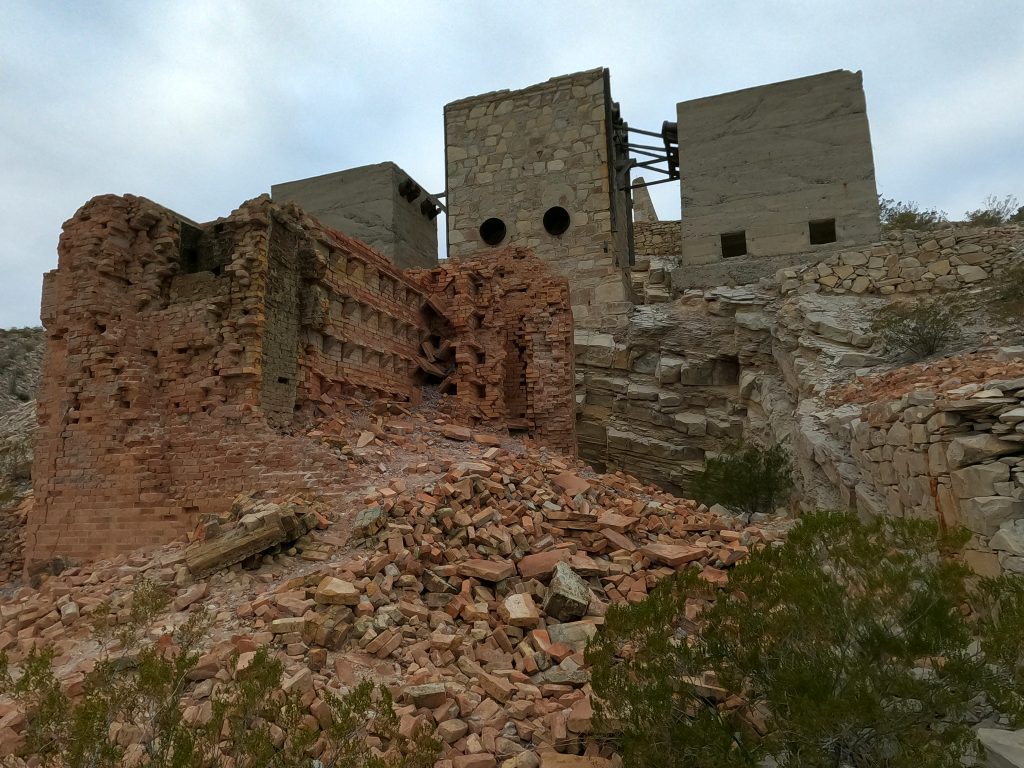
Realizing his opportunity, Mr. Solis quickly set the Mariscal Mine in motion to harvest the cinnabar. For 43 years Mariscal Mine produced nearly ¼ of the of the total mercury produced in the United States.
Eventually the mine was abandoned due to the declining mercury market after the World Wars. But with many structures still standing, it is the best preserved mercury mining site in the state of Texas.
A Popular Stop Along River Road East
You can see the mine for yourself if you can haul your ass (carefully) down River Road East, a notoriously rough 4×4 road running through the heart of the park. I recently took this trip myself, so look for a review of that experience coming soon.
The Glenn Spring Wax Factory
Mariscal Mine wasn’t the only industrious place in Big Bend, though. The Glenn Spring area once boasted a wax factory.
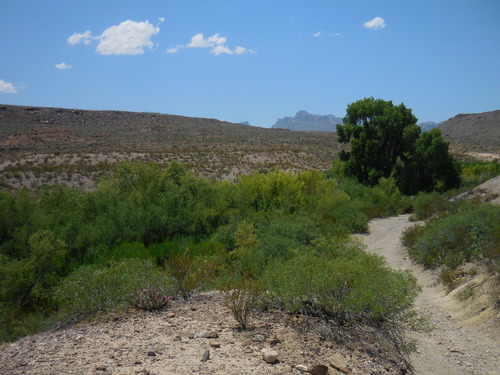
Glenn Spring was a prominent place in Big Bend because it had a reliable water source. The first Anglo settler here, H.E. Glenn, dug out and walled the largest of these springs.
An abundance of the Candelilla plant grew here. The plant has a waxy coating on its stems that reduces evapotranspiration (prevents moisture loss, ya dummy). If you process the plant correctly, you can separate the wax from the plant.
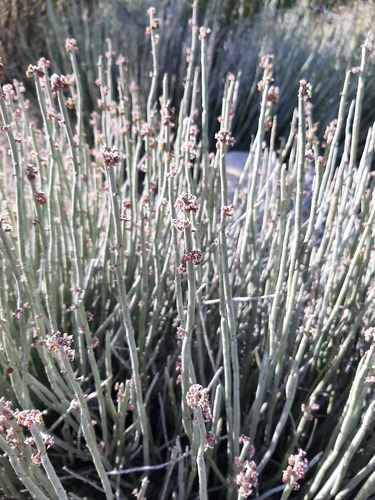
Over time, it was discovered that this wax could be used in thousands of products. Examples included waterproof coatings, chewing gum, varnish, shampoo, and even in skin moisturizers as an emollient, or protective layer.
So in 1914, C.D. Wood and W.K. Ellis built a factory and processed the shit out of that Candelilla.
The Boquillas Hot Springs
But perhaps the most famous historical site in BBNP are the Boquillas Hot Springs.
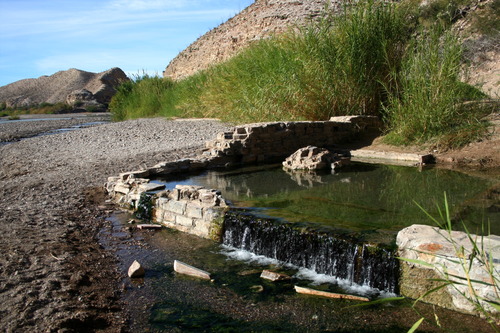
Beginning upstream from Rio Grande Village, there are a series of thermal springs that emerge along the Rio Grande River. Humans have actually occupied this area for thousands of years. But the modern day site of the Boquillas Hot Springs began in 1909 at the hands of a sickly man named J.O. Langford.
How do Hot Springs work?
Groundwater circulating deep in the earth becomes heated by geothermal energy and pressure, before returning to the surface as hot springs at 105F. The water carries mineral salts such as calcium carbonate, calcium sulfate, lithium and sodium chloride.
Healing Waters of the Hot Springs?
Langford heard rumors that these springs could heal the ill. Being unwell from the day of his birth, Langford purchased a claim on the land (site unseen) in the hopes of finally finding relief from his constant illness. He then hauled his pregnant wife and small daughter across the barren country to homestead his claim.
After 21 days of bathing in and drinking the water, Langford was cured of his various ailments. Or so the story goes…
Like most of the early settlers, Langford was an industrious fuck. After his miraculous recovery, Langford built a motel, store and post office in the area.
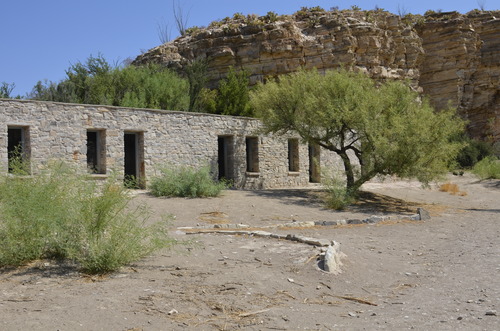
He also built a bathhouse and opened the springs to the public – for 10 cents a day or $2.00 for a 21 day course of treatment. Years later, he sold the springs to the park for $10 – a bargain if his healing claims are to be believed.
Today, you yourself can bathe in these historic hot springs – but please keep your clothes on! My first experience at the Hot Springs was most unsettling.
More Information
Thanks for reading! I hope this article inspired you to explore the history Big Bend, and the many amazing places it preserves.
You can learn more about this amazing area and its long history on the NPS website.

